A high level of customer satisfaction is a business goal for every brand and a key to its success. If you're reading this article, it means you probably agree with this statement, and you are looking for tips on how to improve customer satisfaction.
Customer satisfaction affects business revenue. Low customer satisfaction levels mean lower customer loyalty, which in turn means lower retention rates. According to a book titled Marketing Metrics, businesses have a 60-70% chance of selling to an existing customer, while the likelihood of selling to a new customer is only 5-20%.
With this in mind, can you afford to offer a poor customer experience? The tips we collected in this article will help you find out how to identify dissatisfied clients by collecting customer feedback.
Using customer insights, you can meet customer expectations, boost customer satisfaction, and increase your retention rate.
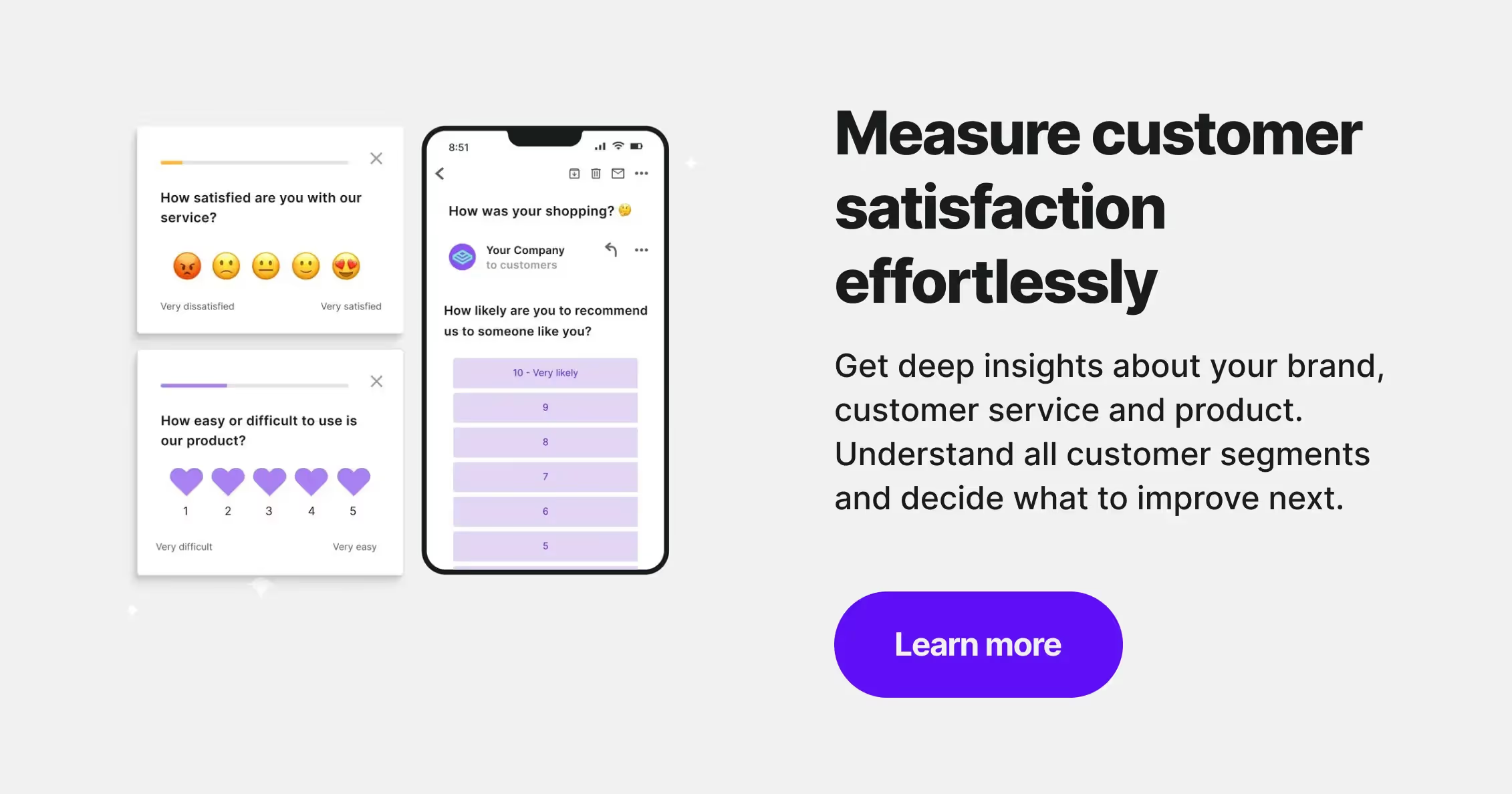
How to boost customer satisfaction?
So how can you improve customer satisfaction in today's customer-centric world? These are some general rules that apply to all businesses, no matter their size or industry.
- Collect customer feedback: To better understand your customers' needs, you need to listen to them and know what they want. By using surveys, you can measure customer satisfaction and discover what product improvements your customers request.
- Turn customer feedback into action: Now that you know what your customers want, it's time to turn their feedback into action. For example, if a customer said your onboarding sessions are not helpful, it's worth working with your team to improve them.
- Improve your product or service: You should constantly strive to improve your product or service based on customer feedback. For instance, if the customer requests features you can't yet deliver, always update them on the progress. This lets you keep customer satisfaction levels high.
Follow up with your customers: Have you made an improvement based on what your customer has told you? Follow up with the customer to let them know about it. Keeping your customers in the loop shows that your business values customer feedback.
So, improving customer satisfaction comes down to gathering customer feedback and then acting on it. But you might be wondering what practical steps you can take today that will bring you closer to your goals. As a customer-centric company, here is what we suggest:
- Offer multi-channel support
- Make collecting feedback a company process
- Measure customer satisfaction regularly
- Collect and analyze feedback across all touchpoints
- Actively ask customers for feedback
- Share feedback across all your teams
- Reply to all feedback
- Act on complaints and negative reviews

Tip #1: Enhance customer experience: Offer multi-channel support
The easier your customers can contact you, the higher your customer satisfaction levels. To offer multi-channel support, you need to be where your customers are.
Consumers use various channels and devices to make purchases. That's why it's worth having a presence to cover any channels your customers use. These channels include:
- Live chat support
- Social media support
- Email support
- Phone support
In short, what's the one biggest benefit of multi-channel support? You can engage your customers over their preferred method of communication. So ensure that you offer top-quality support across all the channels. This lets you boost brand credibility as well as your customer satisfaction.
Don't know how happy your customers are with the support you offer? Try sending them this free, ready-to-use survey to find out:
Make collecting feedback a company process
Who knows better what your customers want than the customers themselves?
Customer feedback is one of the most powerful resources your business can have. It's a clear indicator of how pleased your customers are with your brand, services, and products. Above all, customer feedback indicates what your customer satisfaction levels are.
We have a set of company values, and customer obsession is one of the key values. It's not only on paper. We try to embed it in all our processes. We try to cultivate customer obsession and force all the decisions to be not only data-driven but also customer-driven. We try to ensure that all our solutions are based on customer problems.
—Kateryna Martynova, Head of Research at Preply
Here's one easy, 2-step recipe to become a customer-centric company:
- Collect customer feedback through surveys using different channels.
- Turn that feedback into action.
It's as simple as that. You collect customer feedback. You act on customer feedback. You improve the customer experience and increase customer satisfaction. Rinse and repeat.
Taking customer feedback into account shows you value customers' opinions.
Here's an example of a user experience survey:
With that out of the way, let’s discuss how else you can improve customer satisfaction.
Tip #3: Run customer satisfaction surveys regularly
A study by Bain & Company reveals that
companies with a customer experience mindset drive revenue 4-8% higher than the rest of their industries.
But how do you know your customer satisfaction scores?
The first step is measuring customer satisfaction. As a result, you can receive valuable insights into areas to improve. But also find out what works well.
So, how to start measuring customer satisfaction? Here are the three most important customer satisfaction surveys:
NPS (Net Promoter Score)
NPS survey gauges customer sentiment towards your product or service, by asking how likely customers are to recommend you. With Net Promoter Score, you can build a trendline of overall satisfaction that can predict repurchases and referrals.
For example, MAJORITY checks on its customers early in the journey, sending an NPS survey after 14 days.
The 14-day NPS survey has been game-changing—it helps us support users before they even reach out for help.
—Aura Arias, Head of CRM at MAJORITY
The Customer Support team contacts users who gave negative feedback, while promoters who gave a 9 or 10 score are funneled to referral campaigns.
The company sends another NPS after a customer has been in for 3 months.
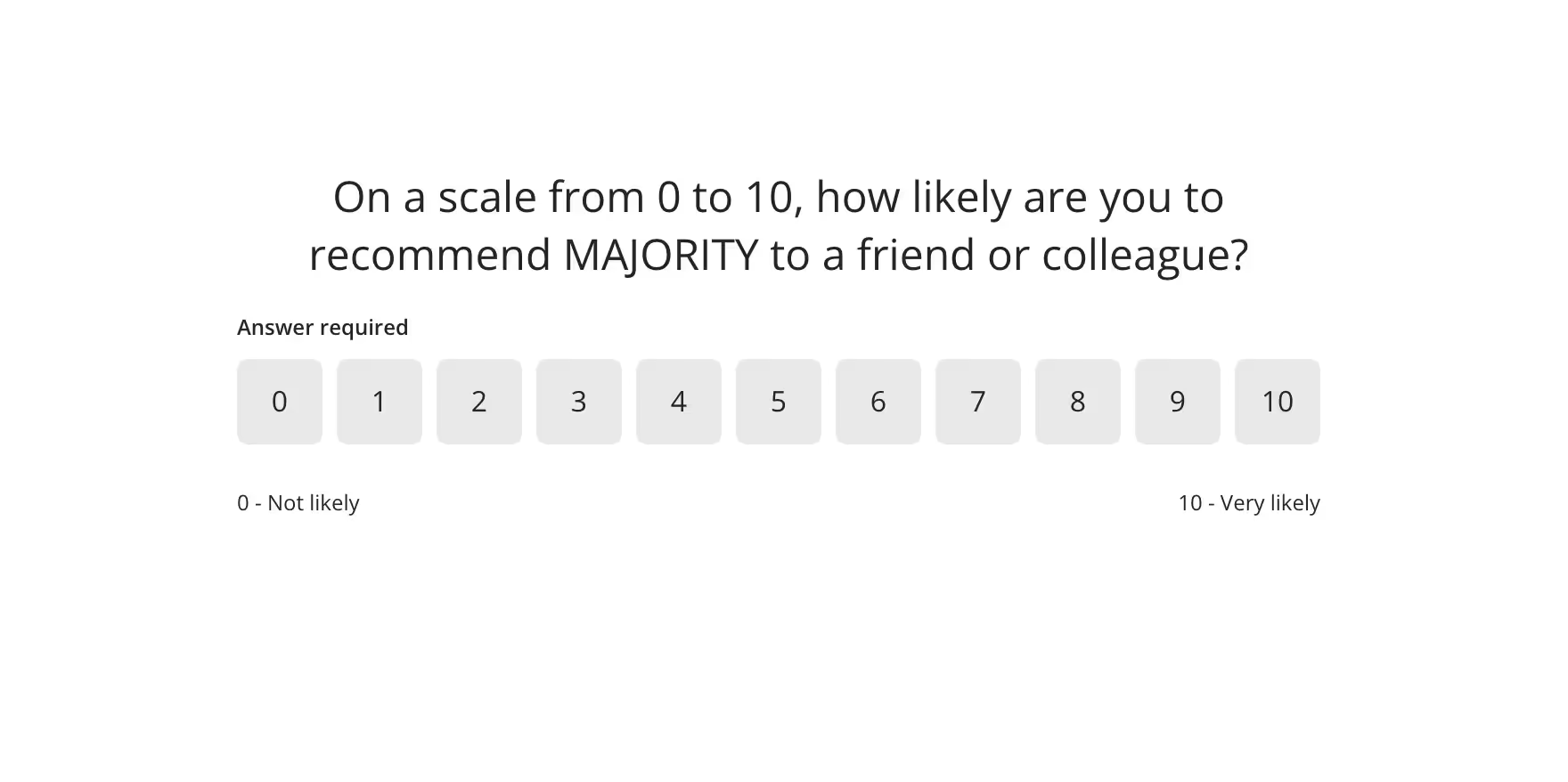
It tracks long-term satisfaction and helps assess customer retention.
CSAT (Customer Satisfaction Score)
A customer satisfaction score survey quickly shows whether your customers are happy with your product or service. It usually uses a 1-5 rating scale with additional customer questions to gather qualitative data as well.
CES (Customer Effort Score)
Measure the ease of doing business with your company with the Customer Effort Score. This survey focuses more on your clients' satisfaction with their customer journey. Is it frictionless? Can they self-serve themselves? Do they need customer service help?
You can use it to improve customer experience by removing any roadblocks on the way to a successful purchase.
By running these three customer surveys you can understand the drivers for improving customer satisfaction.
For example, imagine you know what your customers are complaining about. And you also know what they like about your product or services. Isn’t it then easier to keep them happy?
Suppose a customer mentions slow response times when giving a low CSAT score. You know you’ll need more people in your support team!
Tip #4: Collect and analyze feedback across all touchpoints
Collect feedback from multiple sources
It's simple. Ask customers for feedback where they are most engaged. There are many survey distribution channels for you to choose from.
For example, if you're looking to run CSAT surveys after closing a ticket, you can use email surveys.
And if you're looking for feedback on a specific feature of your web app, run an in-product survey. You can trigger it to appear when a customer uses that feature.
Here are all the survey channels you can use with Survicate:
- Website and web app surveys
- Email and link surveys
- Mobile app surveys
- Intercom Messenger surveys
- Feedback button
But feedback is so much more than just surveys. You should aggregate data from multiple sources to get a real 360-degree view of customer experience. Take online reviews, Intercom chats, customer interviews, and calls. There's so much qualitative information siloed within different teams' spreadsheets.
Analyze all your customer feedback
With Survicate, you can finally store it in one place and democratize access to it. What's more, Insights Hub will auto-categorize all the input into topics (for example, negative comments, product features, service quality), so you'll have it all served on a silver platter.
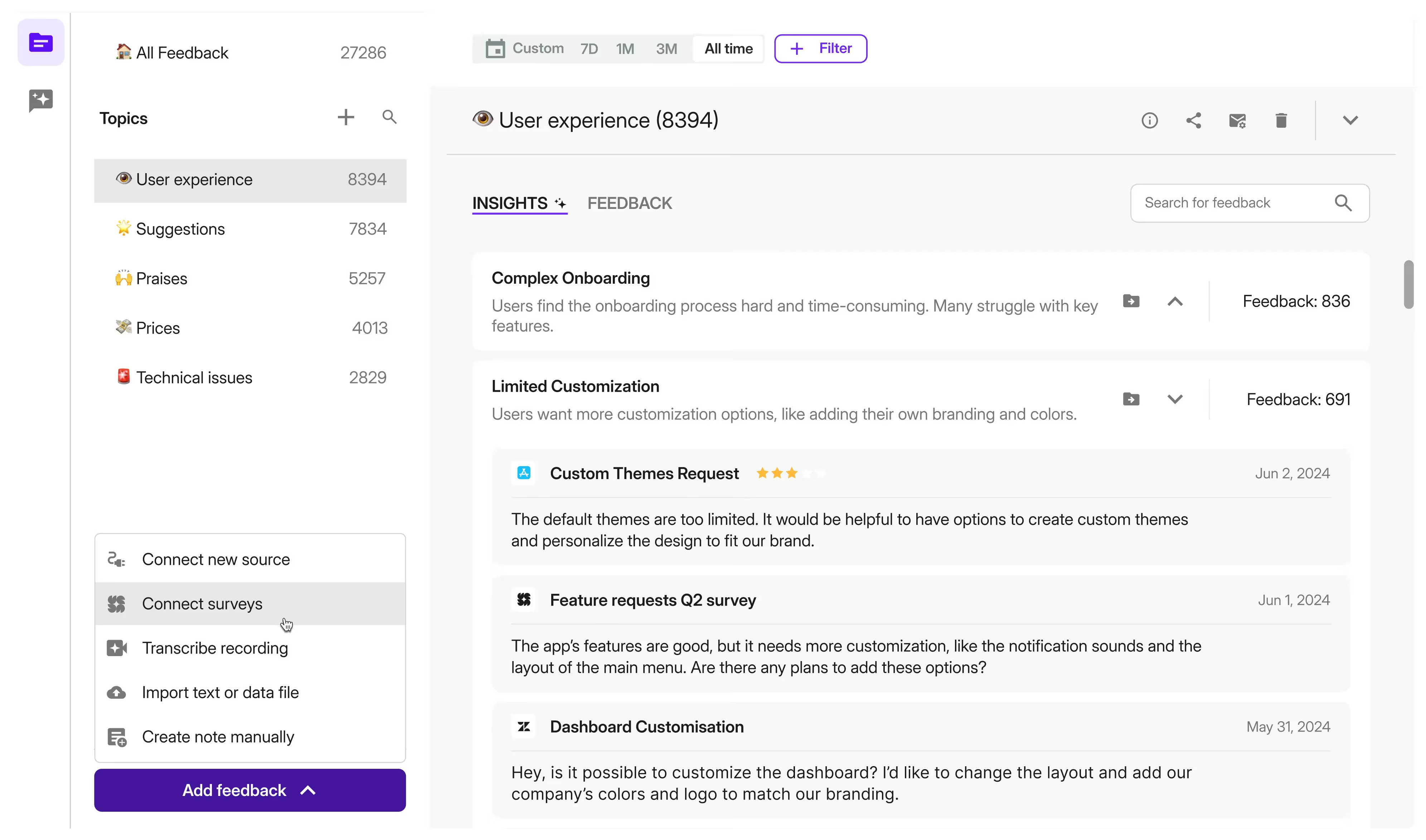
Any questions about your feedback? Ask the chat-based Research Assistant to dig down into the terabytes of data and seek the most accurate answers using the data from Insights Hub only.
You can also set up Dashboards that track metrics you specifically need. You can connect quantitative data, for example, the CSAT score, with the reason for abandoning the cart.
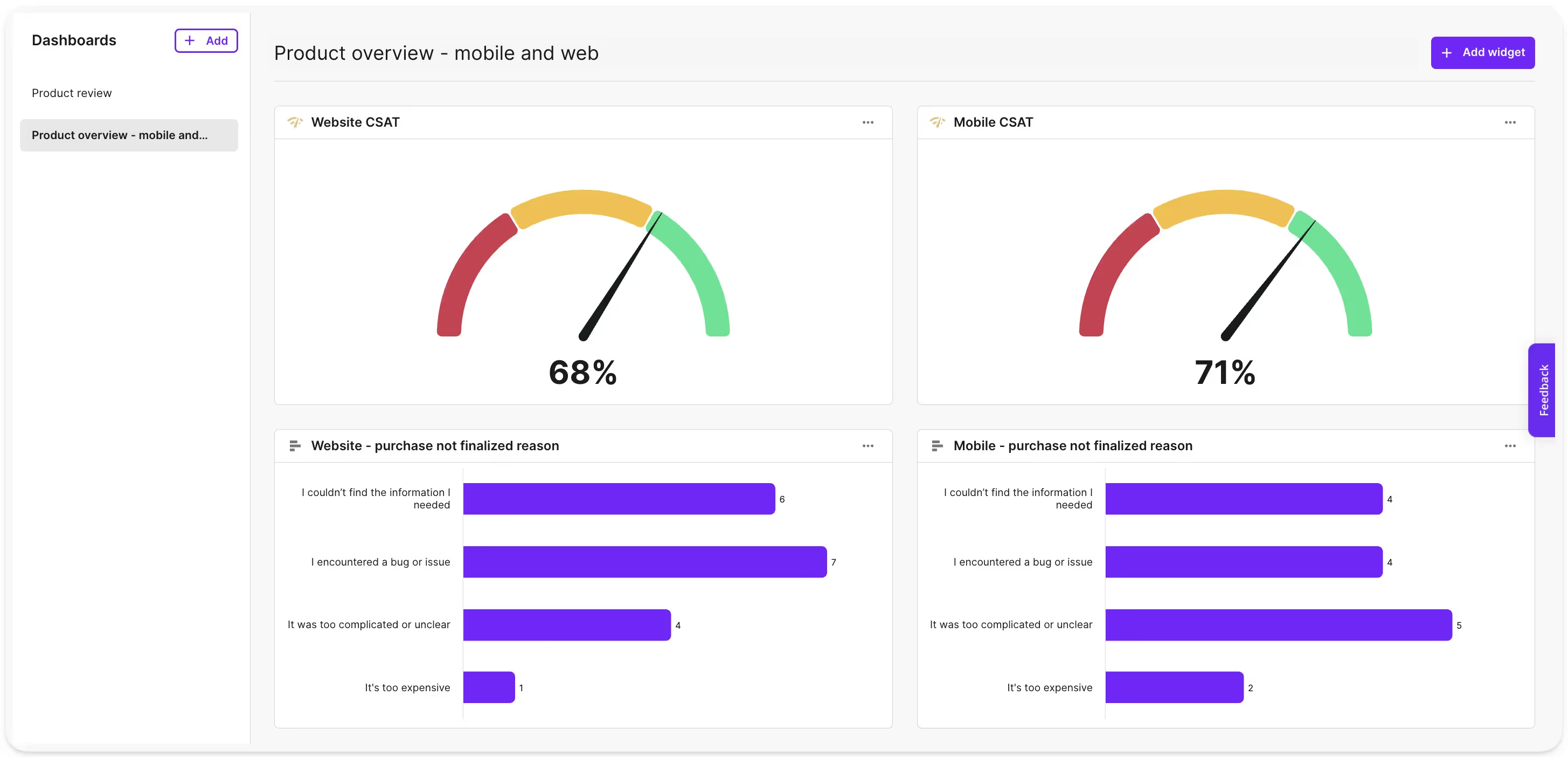
The customization is almost limitless. It all depends on what kind of customer questions you want to answer.
Tip #5: Actively ask customers for feedback
Don't wait for clients to leave negative reviews. Instead, encourage customer feedback and be proactive about collecting it.
For instance, did a customer just buy from you? Ask what made them buy and what you can do to increase their post-purchase customer satisfaction.
You can also set up an always-on feedback button on your website or inside your product to encourage spontaneous customer interactions and discover bugs or issues.
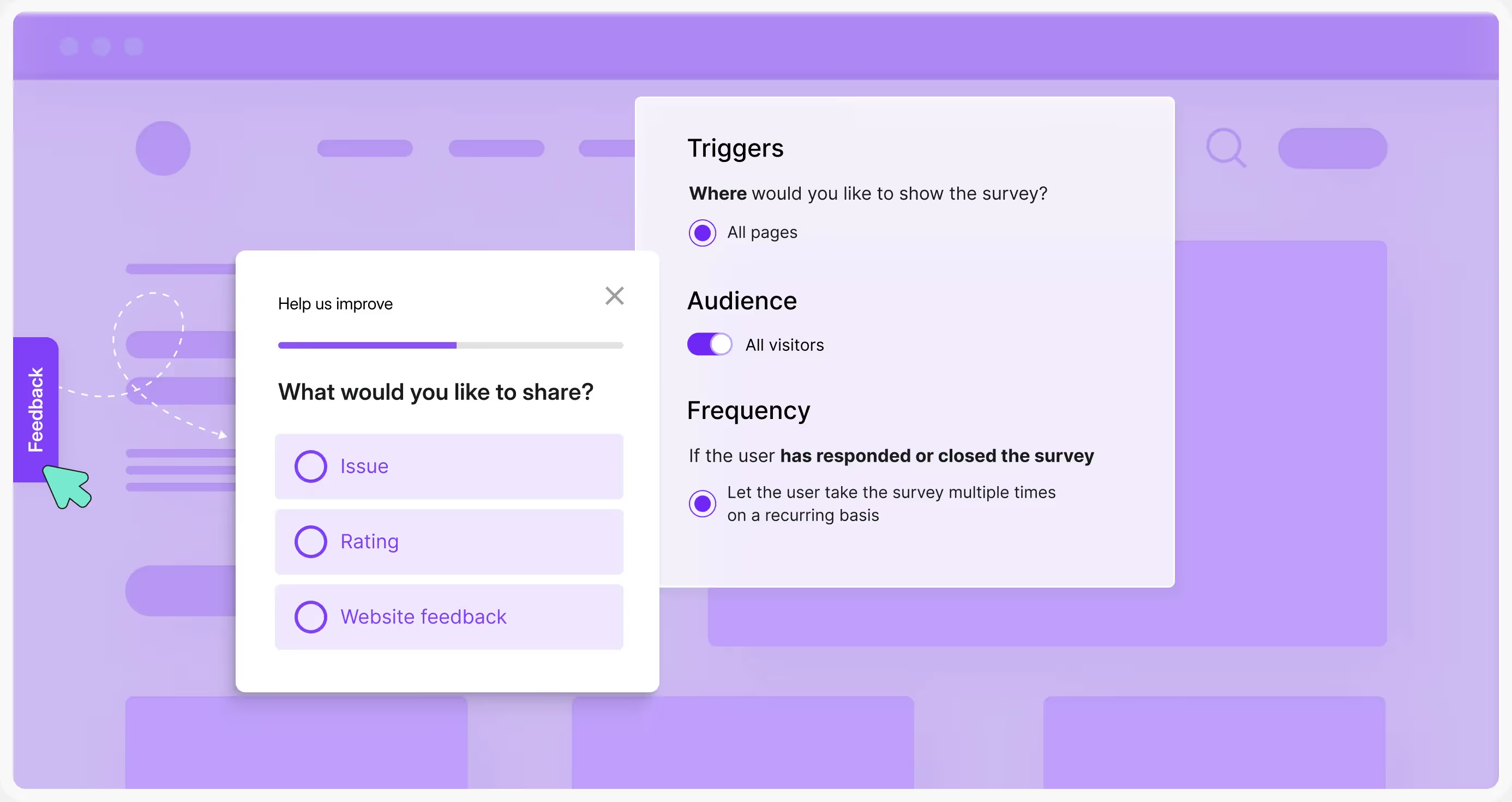
If you want to launch a new feature, it's worth asking your customers what their expectations are. It's a great way to make sure the new feature will meet their needs. This, in turn, allows you to boost customer satisfaction levels.
Tip #6: Share feedback across all your teams
Let's face it, customer feedback is useless if it goes unheard. That's why analyzing and responding to customer feedback should be a company-wide effort.
If a piece of feedback concerns mobile application bugs, it's best addressed by the product team.
But what if a customer complains about your recent social media campaign? Then it's your marketing team that needs to respond.
The more, the merrier. That is, the more people in your company collaborate on customer feedback, the higher your customer satisfaction.
But how do you do it in real life? Well, you can use your company communicator, such as Slack or Microsoft Teams, and connect it to your feedback tool.
Our Product teams started a Slack channel to get sentiment about their product. They're discussing it on an ongoing basis and can comment on the feedback they get on the thread. This is really cool.
Kateryna Martynova, Head of Research at Preply
It can spark cross-team discussions and can lead to enhancing the customer experience. By actively listening to your customers through an open feedback channel, the whole company learns customer preferences and what they really need. And, your departments will then find it easier to sync their efforts.
Tip #7: Reply to all feedback
Whether you get positive or negative customer feedback, it's worth taking the time to respond to it.
If a customer is happy, you can capitalize on it. For example, by getting more positive reviews, case studies, or testimonials.
But why is this important? 88% of consumers trust user reviews as much as personal recommendations. So, building social proof can encourage potential clients to buy from you.
And if a consumer is upset, you should try to find out what makes them unhappy. You can then improve your product or services and reduce the likelihood of churn.
What to do when you get new feedback? If it's negative, make sure to apologize to the customer. In high-risk cases, you can even offer compensation. Here's a sample response to negative customer feedback:
Hi John,
Thanks for taking the time to rate us and thanks for the honest feedback! We're sorry to hear about [insert the reason the customer is unhappy here].
Please rest assured we've passed on your comments to the right team. They'll be fixing things up very soon. Your feedback will help us improve!
Is there anything we can do to make up for the bad experience you've had with us? Please let us know how we can help.
On the other hand, if the feedback is positive, try asking the customer a favor. Some people need a little encouragement to leave you a positive review or a testimonial.
Above all, the least you can do is thank the customer for taking the time to answer your survey. Because following up on customer feedback is a surefire way to increase customer satisfaction.
Here are some more customer satisfaction tips about how to handle customer feedback:
- Customers appreciate it when you acknowledge you hear their voices.
- When you turn feedback into action, it helps you drive loyalty in your existing customers.
- Customers who have a positive experience with your brand can become your brand advocates
Replying to customer feedback can only boost your customer satisfaction levels. Think of it this way. If you devoted 10 minutes of your time to answer a survey, would you want the company to follow up with you or not?
Tip #8: Act on complaints and negative reviews
Did you know that complaints and negative reviews are a source of valuable feedback? When you analyze them, you know exactly what your customers want.
So treat complaints and negative reviews as an opportunity. It's a chance to build closer relationships with your customers. Here are some tips to help you:
- Always contact the customer directly after they've left you a negative review
- Try to fix their issue and update them on the progress
- Reply to negative reviews on review sites on one condition. Only when you're sure it won't trigger an even more emotional response from the customer and harm your business
- Keep track of the reviews your customers are leaving
- Let your customers know you've acknowledged and resolved their complaint
Those tips will help you improve your customer satisfaction levels. Why? More than two-thirds of users trust reviews more when they are a mix of negatives and positives.
As a result, negative reviews won't kill your business if you respond to them well.
How Survicate can help you improve customer satisfaction
Customer satisfaction isn't just a metric; it's a reflection of how well your business meets expectations. To improve it, you need to understand what your customers really think and feel at every stage of their journey.
Survicate makes this easy. With a wide range of survey types like CSAT, CES, and NPS, you can measure satisfaction at key touchpoints, from post-purchase to support interactions. Want to know why someone churned? Or what delighted a loyal customer? Survicate helps you ask, listen, and learn.
You'll get real-time feedback, powerful insights through AI-based analysis, and seamless integrations with tools your team already uses. That means you're not just collecting data, you're turning it into meaningful action that drives loyalty.
Try Survicate for free and start delivering the experience your customers deserve.
How to improve customer satisfaction FAQs
What is customer satisfaction, and why is it important?
Customer satisfaction measures how well your products or services meet customer expectations. It's crucial because satisfied customers are more likely to stay loyal, make repeat purchases, and recommend your brand to others.
How can I improve customer satisfaction in 2025?
To improve customer satisfaction in 2025, focus on personalized support, proactive feedback collection, cross-team collaboration, and fast response to customer issues. Regularly measuring satisfaction helps you adapt quickly.
What are the best ways to measure customer satisfaction?
You can measure customer satisfaction using three main methods:
- CSAT (Customer Satisfaction Score) – how satisfied customers are after a specific interaction
- NPS (Net Promoter Score) – likelihood they’ll recommend your business
- CES (Customer Effort Score) – how easy it was for them to interact with you
How does customer feedback help improve satisfaction?
Customer feedback reveals what works and what needs fixing. Acting on feedback helps you improve experiences, strengthen customer trust, and increase overall satisfaction.
Why do businesses lose customer satisfaction?
Common causes include poor support, lack of personalization, ignoring customer input, and complicated processes. Addressing these pain points is essential to maintain strong satisfaction levels.
What tools can help improve customer satisfaction?
Survicate is a powerful tool for improving customer satisfaction. It helps you run targeted surveys (CSAT, NPS, CES), collect insights at every touchpoint, and take action based on real-time feedback.

.avif)






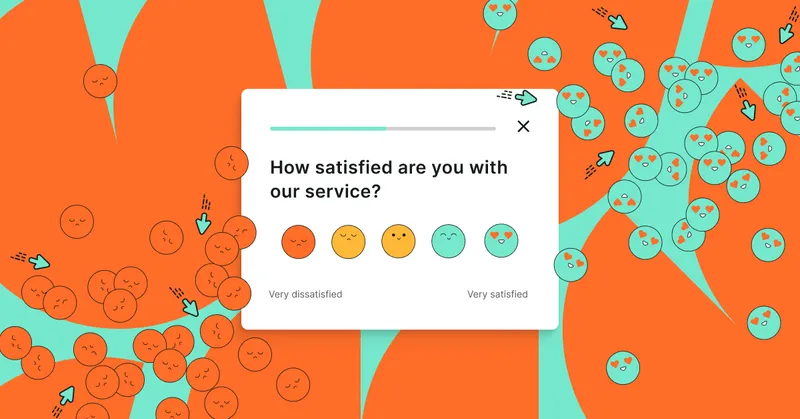
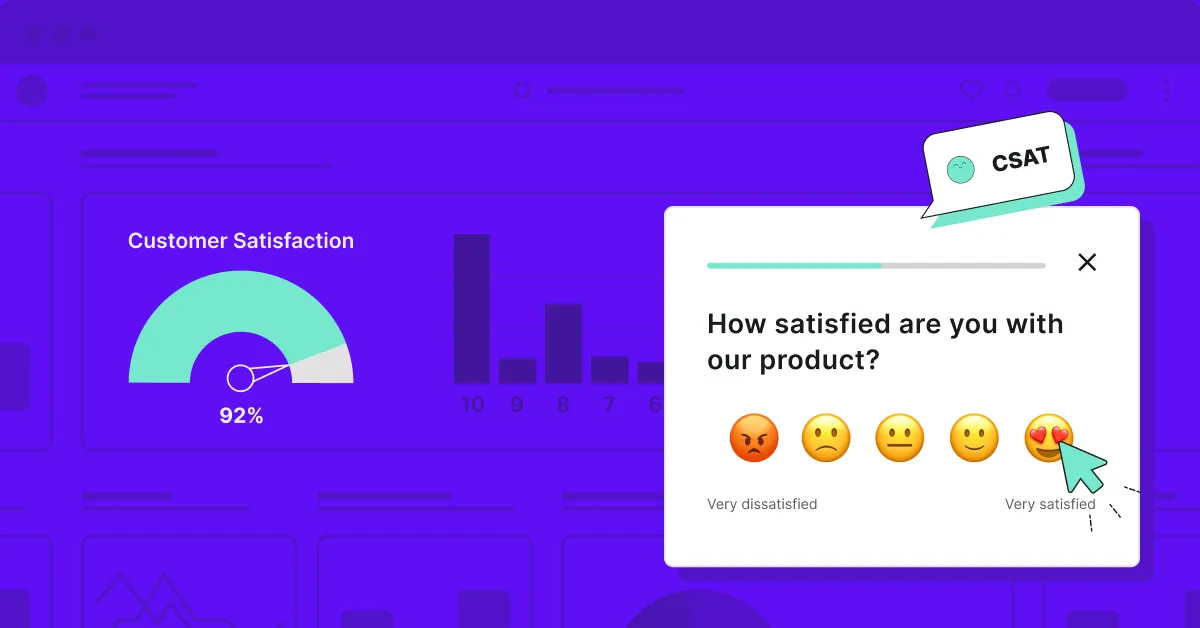
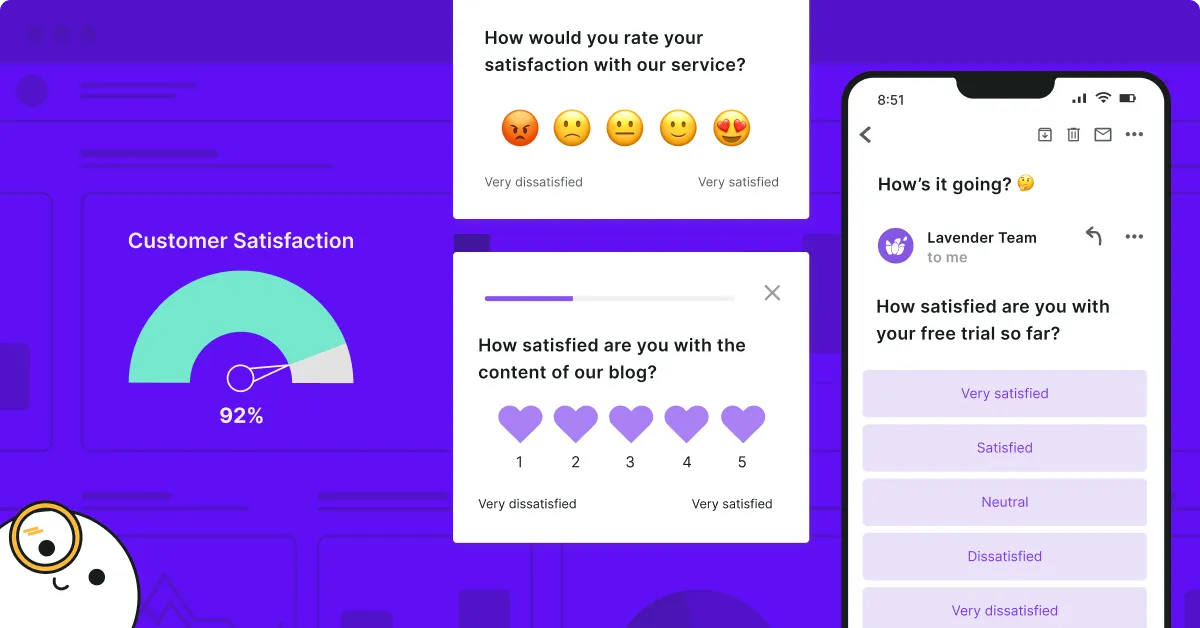
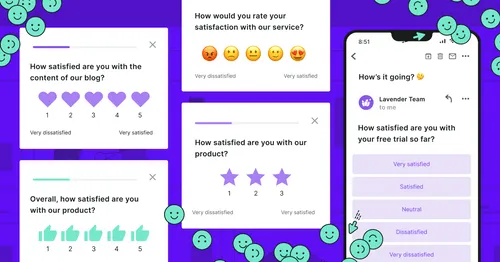
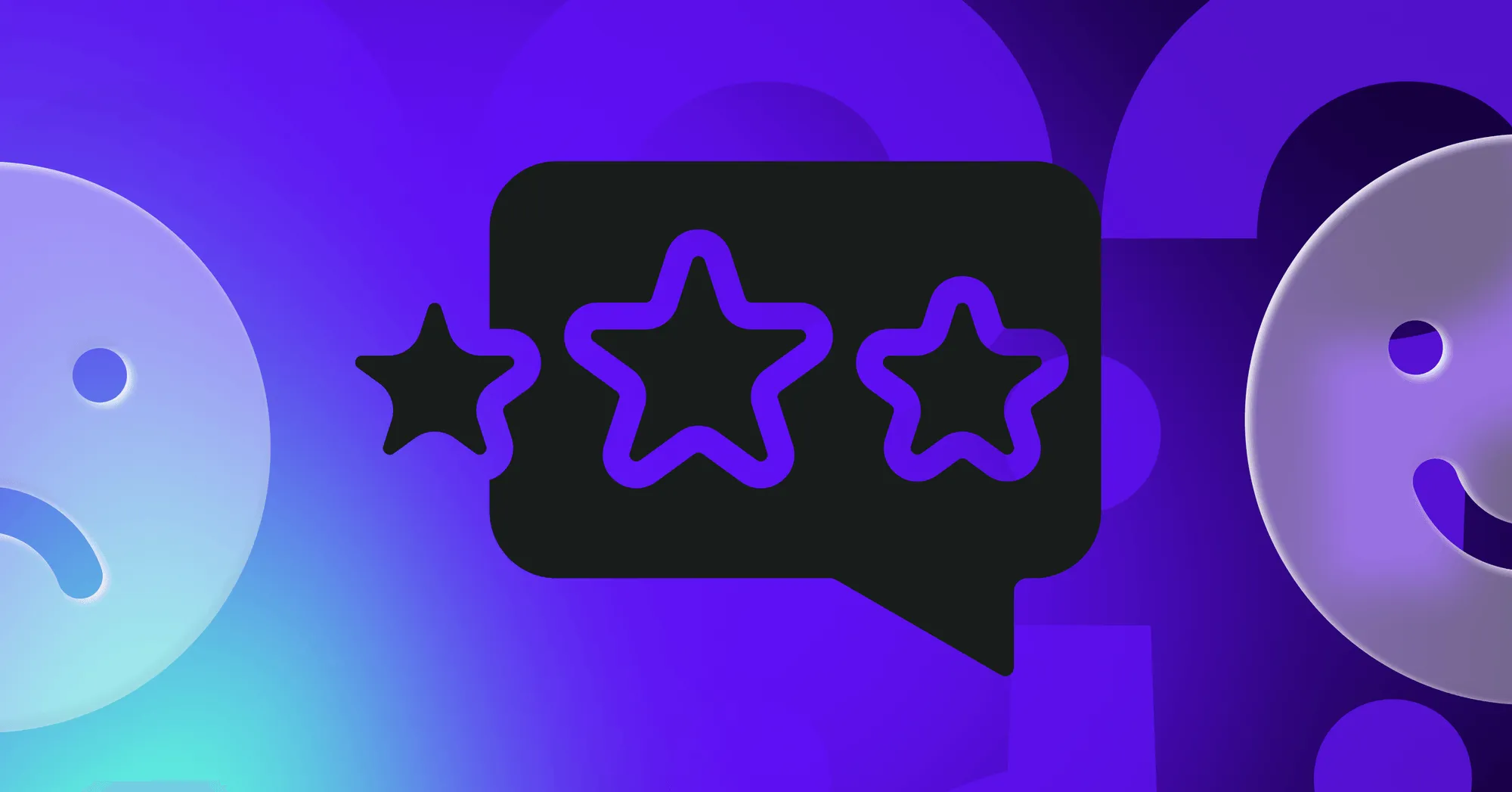
.svg)

.svg)



